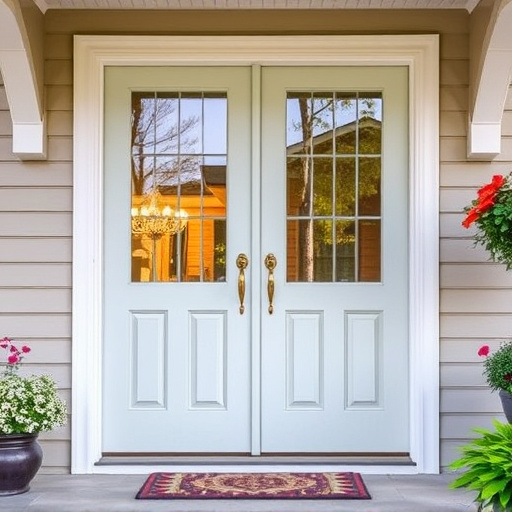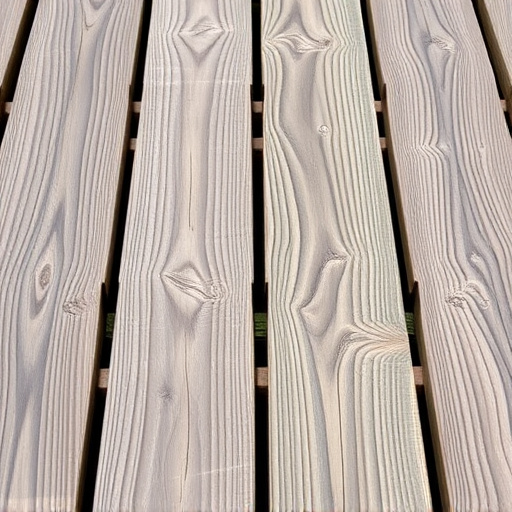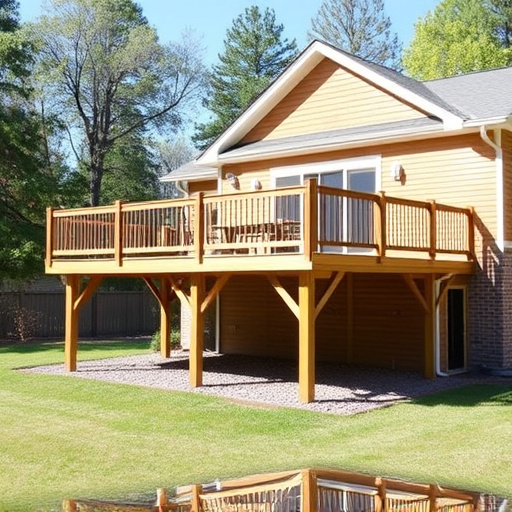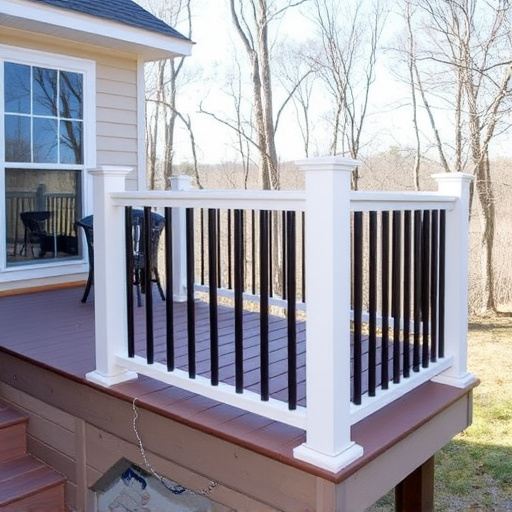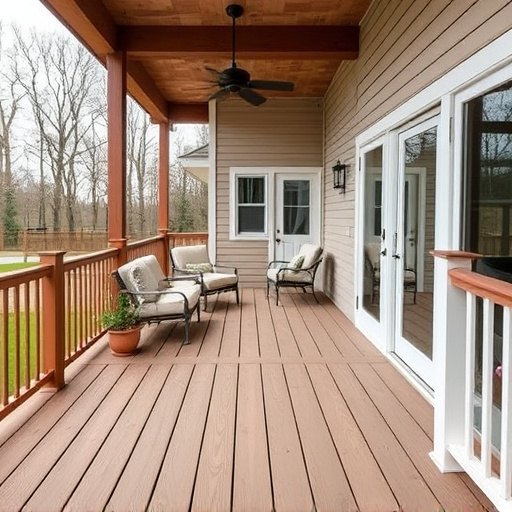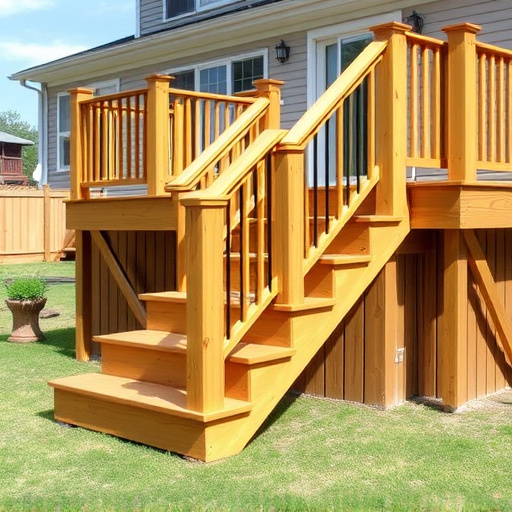To prepare your deck for winter (as advised by both homeowners and deck builders), follow these steps: inspect for damage, clean with a pressure washer, apply sealant for slip resistance, ensure proper drainage, and address storm damage. Use durable materials like treated wood or composite decking, invest in quality cleaning tools, and apply winterizing products to prevent frost, ice, and snow buildup.
As winter approaches, preparing your slip-resistant decking areas is essential for safety and longevity. This guide provides best practices for ‘winterizing’ these high-traffic zones, focusing on both functionality and durability. We’ll explore the unique challenges posed by snow, ice, and extreme temperatures, and offer expert tips from top deck builders on how to protect your investment. From preparation techniques to material choices, learn how to keep your decking areas safe and sound through the cold season.
- Understanding Winter's Impact on Decking Surfaces
- Essential Steps for Preparing and Protecting Your Deck
- Choosing the Right Materials and Tools for Longevity
Understanding Winter's Impact on Decking Surfaces
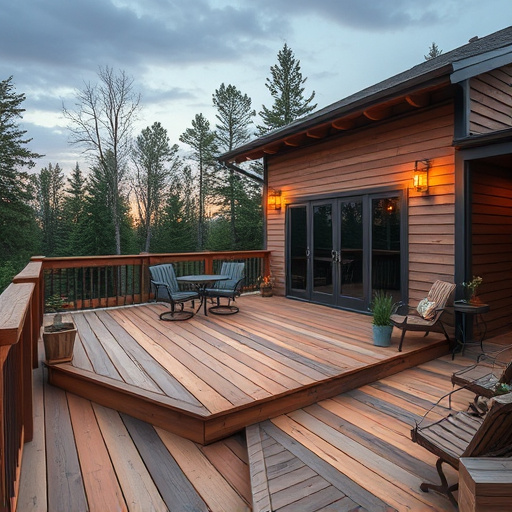
Winter’s harsh conditions can take a toll on decking areas, presenting unique challenges for both homeowners and deck builders. The element of freezing temperatures, melting snow, and ice can lead to several issues, such as loose or damaged boards, rotted components, and uneven surfaces. Understanding these potential problems is the first step towards effective winterization.
When the cold season sets in, it’s crucial to prepare decking for the upcoming weather changes. Deck builders often recommend a comprehensive approach that includes cleaning, sealing, and treating the surface to enhance its resilience. Regular maintenance and addressing any existing concerns, such as siding replacement or roofing repairs, are essential components of this process. By prioritizing exterior home improvements, homeowners can ensure their deck’s longevity and safety throughout the winter months.
Essential Steps for Preparing and Protecting Your Deck
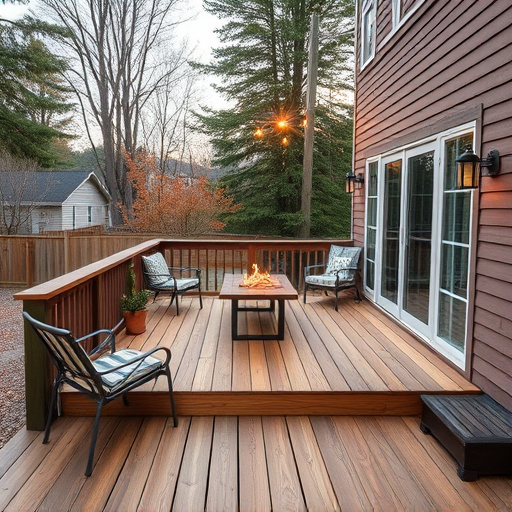
Preparing your deck for winter is a crucial step to ensure its longevity and maintain its slip-resistant properties. Here are some essential practices that every homeowner and even deck builders should follow. First, inspect the deck surface for any loose or damaged boards, nails, or screws. Repairing these issues promptly prevents accidents and ensures the deck’s stability during colder months. Next, clean the deck thoroughly to remove dirt, debris, and algae buildup using a pressure washer, following up with a mild detergent if needed.
After cleaning, apply a suitable sealant designed for slip-resistant surfaces. This step is vital, especially in regions experiencing icy conditions, as it enhances traction and makes the deck safer. Consider using products recommended by professionals, ensuring they are compatible with your deck material. Additionally, homeowners should not overlook the importance of proper drainage around the exterior of their homes, a key aspect managed by professional home exterior services. Storm damage repair is another critical component that can be addressed to ensure your deck’s resilience against harsh weather, making it less prone to winter-related damages.
Choosing the Right Materials and Tools for Longevity
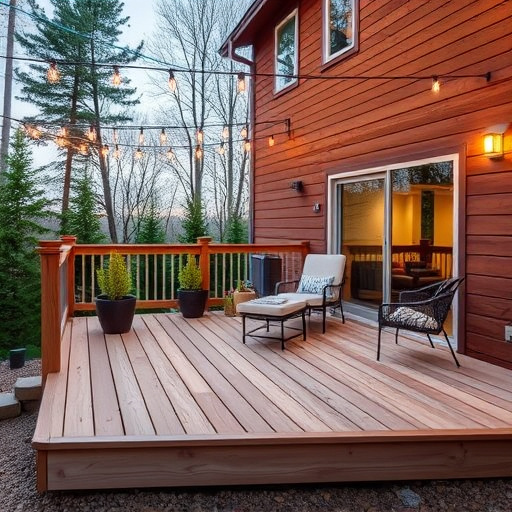
When preparing your decking area for winter, selecting durable materials is a key step to ensure longevity. Deck builders recommend opting for high-quality, weather-resistant materials such as treated wood or composite decking, which can withstand harsh weather conditions and reduce the need for frequent replacements. These materials are designed to resist rot, mold, and insect damage, extending the life of your deck.
Choosing the right tools is also essential. Investing in sturdy brooms, scrapers, and pressure washers will aid in cleaning and maintaining your decking effectively. Additionally, consider using specialized winterizing products like sealers or stains that protect against frost, ice, and snow build-up, further enhancing the durability of your slip-resistant decking.
As winter approaches, it’s crucial that deck builders and homeowners alike prioritize slip-resistant decking areas. By understanding the impact of winter conditions on decking surfaces and implementing essential preparation and protection steps, you can ensure the longevity and safety of your deck. Choosing the right materials and tools will further safeguard against potential hazards, making your outdoor space a safe haven for relaxation throughout the colder months. Remember, proper winterization is key to preserving the quality and functionality of your deck for years to come.


